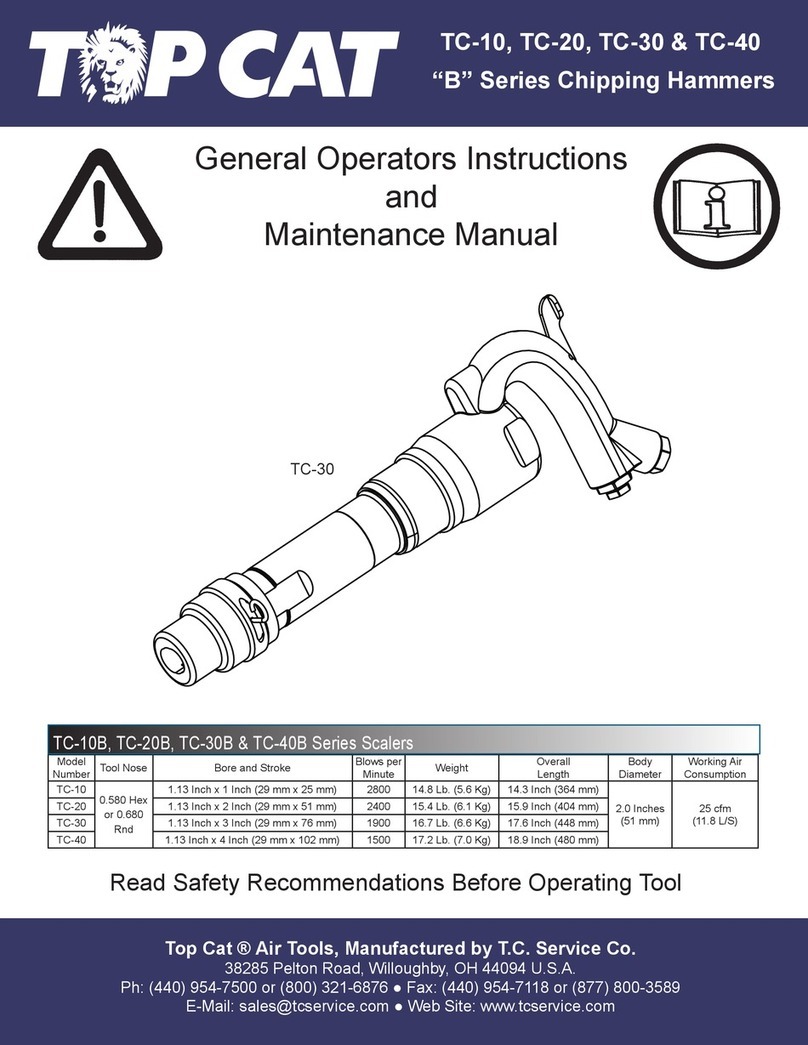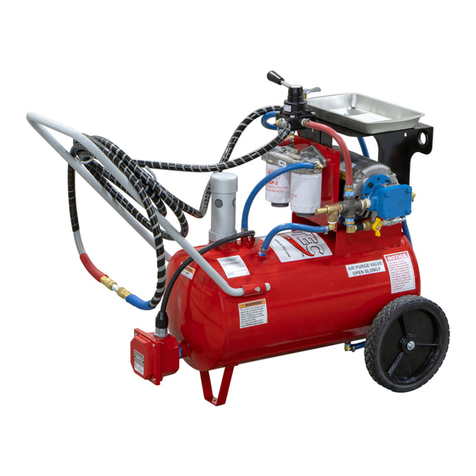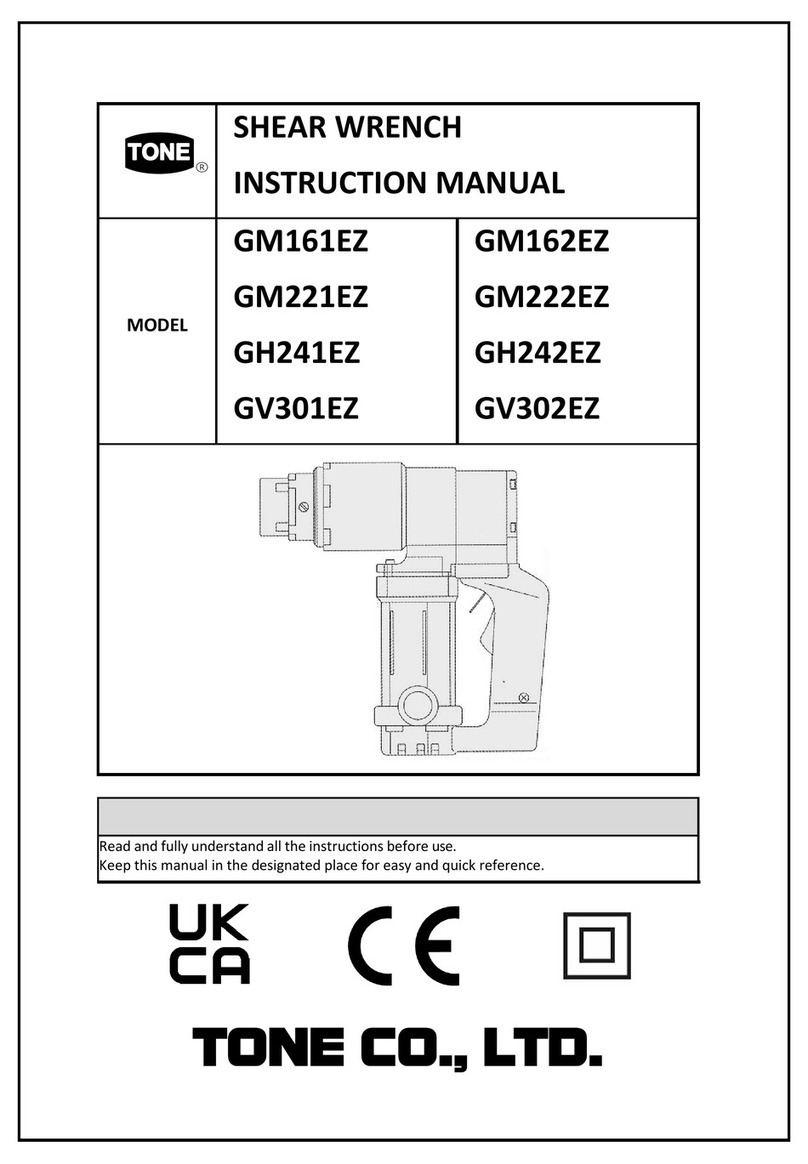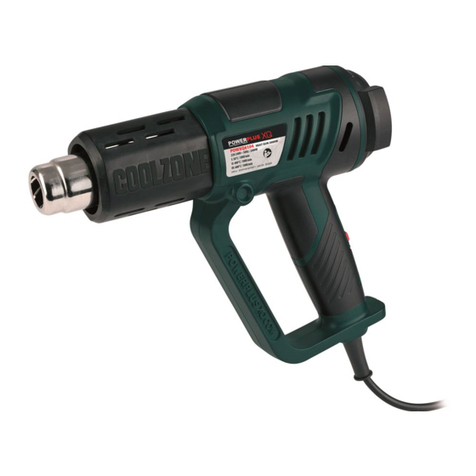SM CONTACT SM CRIMP 2000 User manual

NOTICE SM CRIMP 2000 (V7/5 July 2010) 1
SM CRIMP 2000
Operators
Manual
SM CONTACT
ZAC de la Bonne Rencontre - 20 à 22 Voie Gallo–Romaine
77860 QUINCY VOISINS
Tel : 00.33 (01).64.63.66.66 - Fax : 00.33 (01).64.63.67.22
E-mail:[email protected]

NOTICE SM CRIMP 2000-V8.0 / Mai 2012 2
TECHNICAL DATA
Drive: .....................................Three-phase motor with worm gear
Stroke: ...................................35 mm
Crimping rate: .......................Up to 4,000 strokes/h
Motor power:........................0.25kW
Supply voltage.......................110V or 230 V single phase
Power consumption:.............2 A
Power frequency:..................50 Hz
Sound level:...........................< 75 db (A)
Dimensions:...........................W=291 x H 340 x D 490 mm
Weight:..................................59 kg (with tool cassette)

NOTICE SM CRIMP 2000-V8.0 / Mai 2012 3
CONTENTS
1 SAFETY FIRST ............................................................................................................................................................................................................................................... 4
1.1 Presentation ................................................................................................................................................................................................................................... 4
1.2 The general safety device ............................................................................................................................................................................................................... 4
2 COMPLETENESS OF CONSIGNMENT ............................................................................................................................................................................................................ 5
2.1 Ordering spare parts and requesting Customer Service. ................................................................................................................................................................. 6
3 INITIAL START-UP ........................................................................................................................................................................................................................................ 6
3.1 Safety devices ................................................................................................................................................................................................................................. 6
3.2 Power connection ........................................................................................................................................................................................................................... 6
3.3 Starting the machine....................................................................................................................................................................................................................... 7
3.4 Keypad / Functions / Indicated Messages ....................................................................................................................................................................................... 8
3.4.1 The key ‘MODE’ .................................................................................................................................................................................................................. 8
3.4.2 The key ‘RESET’................................................................................................................................................................................................................. 10
3.4.3 The keys + and - .............................................................................................................................................................................................................. 10
3.5 Splice band feeding system : How to install a new reel and to introduce the banding............................................................................................................ 10
3.6 Checking the crimping height and clincher centring (assuming these have been correctly set, otherwise see section accordingly). ............................................ 12
3.6.1 Centring the clincher ....................................................................................................................................................................................................... 12
3.6.2 Controlling the crimping height ........................................................................................................................................................................................ 13
4 EXCHANGING THE TOOLING CASSETTE ......................................................................................................................................................................................................14
5 DISMANTLING THE tooling AND REPLACING SPARE PARTS ........................................................................................................................................................................16
5.1 Opening the tooling ...................................................................................................................................................................................................................... 16
5.2 Replacing the punch and/or the guide.......................................................................................................................................................................................... 17
5.3 Replacing the anvil........................................................................................................................................................................................................................ 19
5.4 Replacing the cutting block........................................................................................................................................................................................................... 20
5.6 Setting up the cutting-block.......................................................................................................................................................................................................... 22
5.7 The slice stop ................................................................................................................................................................................................................................ 22
5.8 Replacing and centring the clincher .............................................................................................................................................................................................. 23
6 THE tooling STORAGE DEVICE ....................................................................................................................................................................................................................25
6.1 View and data modifications of the technical datasheet .............................................................................................................................................................. 25
6.2 Updating the data of the technical sheet into the memory. ......................................................................................................................................................... 27
7 DISMANTLING AND REASSEMBLING ..........................................................................................................................................................................................................28
7.1 The frontal compartment ............................................................................................................................................................................................................. 28
7.2 The right-hand safety cover .......................................................................................................................................................................................................... 28
7.3 The left-hand safety cover ............................................................................................................................................................................................................ 29
7.4 The front panel ............................................................................................................................................................................................................................. 29
7.5 The belt......................................................................................................................................................................................................................................... 31
7.6 The gear motor ............................................................................................................................................................................................................................. 33
7.7 The convertor parameters ............................................................................................................................................................................................................ 34
The parameters are handed with the technical sheet on the USB key. ........................................................................................................................................................... 34
7.8 List of inputs and outputs ............................................................................................................................................................................................................. 34
7.8.1 Inputs ............................................................................................................................................................................................................................... 34
7.8.2 Outputs............................................................................................................................................................................................................................. 34
8 TRANSPORTATION .....................................................................................................................................................................................................................................35
8.1 Lifting/transporting the machine manually................................................................................................................................................................................... 35
8.2 Transportation in a vehicle ........................................................................................................................................................................................................... 35
9 POSSIBLE ERRORS: HOW TO RECTIFY THEM? .............................................................................................................................................................................................35
9.1 Punch guide centring problem ...................................................................................................................................................................................................... 37
9.2 Punch guide colliding or too far from the top of the clincher........................................................................................................................................................ 37
9.3 Splice shape imperfect .................................................................................................................................................................................................................. 38
9.4 Display is showing error “index the pin” ....................................................................................................................................................................................... 39

NOTICE SM CRIMP 2000-V8.0 / Mai 2012 4
1SAFETY FIRST
1.1 Presentation
These operating instructions relate to the SM CRIMP 2000 crimping press.
The SM CRIMP 2000 is state of the art in design and operationally reliable.
It is used exclusively for producing spliced crimped connections.
Any use over and above this application is deemed to be other than for its intended purpose.
The following potential hazards exist in the event of use other than the intended purpose, or
with improper use:
Danger to life and limb.
Danger to the machine.
Danger to other material assets.
The machine should be operated only by personnel trained in its use. The new owner of the
machine or his representative has been instructed in and made aware of the operation of the
machine and all sensitive details. He is responsible for the further training of his personnel.
Any person involved with the operation, maintenance, repair, or inspection of the crimping
press at the user’s premises must have read and understood the Operating Instructions and,
in particular, this Section on “Safety”.
The responsibilities relating to operation of the machine must be clearly stipulated and
adhered to.
1.2 The general safety device
1. In addition to the information in these Operating Instructions, the general accident
prevention regulations of your country must be observed.
2. Before starting work, you must familiarise yourself with all the functions and controls and
how they work.
3. Safety devices must be checked once per shift for externally visible damage or defects.
Damage must be rectified without delay. Do not continue operating with safety devices off!
4. The safety devices must never be removed or put out of operation.

NOTICE SM CRIMP 2000-V8.0 / Mai 2012 5
You may be subject to very serious injury if you remove or disable the safety devices.
Following removal for any necessary setting-up, repair or maintenance work, the
safety devices must be properly re-installed immediately before resuming production.
Always withdraw disconnect the power for any setting-up, repair or maintenance
work.
The machine’s power cable must always be freely accessible.
Left-hand safety covers Finger guard Right-hand safety covers
The components to be processed should preferably be brought to the machine with
both hands.
The machine must never be operated with the safety covers or finger guard removed.
Any materials that are caught in the clincher should not be removed before the machine
has been switched off.
The machine must always be switched off before changing the splice band reel.
Switch off the machine before any intervention into the machine and when changing
the tooling.
Only qualified personnel should perform adjustment and maintenance operations.
See Sections 8 for transportation of the machine, either manually or by vehicle.
The manufacturer is not liable for damage arising from failure to observe the Operating
Instructions. We reserve the right to make technical modifications for reasons of quality
enhancement or extended application, or for production reasons.
SM CONTACT is not obliged to supply spare parts hereby.
2COMPLETENESS OF CONSIGNMENT
Your delivery should contain the parts listed below:
SM CRIMP 2000 Splicing Crimping Press.
Power cable.
Foot pedal.
Operating Instructions, including:

NOTICE SM CRIMP 2000-V8.0 / Mai 2012 6
Please check that the consignment is complete and that there is no concealed or obvious
transport damage.
2.1Ordering spare parts and requesting Customer Service.
Please note:
When ordering spare parts or seeking customer service, please provide the following:
Part numbers from the enclosed spare parts list.
Machine Serial and Model number.
Tool Cassette number.
3INITIAL START-UP
3.1 Safety devices
1. The machine must only be operated with the safety devices on!
2. Never extend your hands into the danger area!
3. Should a fault or an accident occur, immediately press the E-Stop (Emergency) button and
disconnect the power cable.
3.2 Power connection
Only qualified personnel must perform any work on the electrical system, such as
connection to power, maintenance or repairs.
Even with the Emergency Stop button pressed, parts of the machine still carry live voltage.
The connection is made via the power cable delivered with the machine. It must be ensured
that the operating voltage corresponds with the mains voltage (230 V/110V). Actuating the
power switch on the rear starts the crimping press.

NOTICE SM CRIMP 2000-V8.0 / Mai 2012 7
3.3Starting the machine.
-Connect power cable (K).
-Connect foot pedal cable (P)
-Turn on the main switch (N) (if the switch is in the off position (lamp not lit), the machine is
not live.
-Unlock Emergency Stop button by turning it to the right.
Main Switch module
The machine is ready
K
K
K
P
N
2 x fuses

NOTICE SM CRIMP 2000-V8.0 / Mai 2012 8
3.4 Keypad / Functions / Indicated Messages
The power switch, in the form of a toggle switch with a red knob (N) is located at the top on the
rear of the machine.
All the other controls and display components are located on the front of the machine.
If the Emergency Stop button is depressed (see picture 8), no crimping cycle can take place. If
the Emergency Stop button is depressed and you press on the foot pedal, “Emergency Stop” is
indicated but the cycle does not start.
The following functions can be regulated with 4 buttons on the front of the machine:
3.4.1 The key ‘MODE’
From the main screen display, access those following functions:
Quantity
150
Total quantity
439870
123456789
123456789
Show the normal operating state of the
machine:
The figures highlighted on the first line
show the inputs activities.
The figures highlighted on the second
line show the outputs activities. See
chapter 7.8
Pic. 9
Pic.. 8
Put the counter en zero through reset:
When the display shows up « Quantity »,
Rest 5 seconds on the bottom « reset » to
put back the quantity at zero on the
counter.
Note: The total quantity cannot be put at
zero

NOTICE SM CRIMP 2000-V8.0 / Mai 2012 9
Only if the tooling memory is programmed.
Version
1.24
Lamplight
Use the keys + and –to activate
or disengage the lamp light
Choose
your language
Use the key + and –to select the
language:
French, English, German, Spanish, Italian,
Japanese, Chinese, or Korean. Press the
key ‘MODE’ to confirm the selection.
Cassette SM CRIMP
Use the key + and –to scroll the tooling
technical data: Components to crimp,
spare parts, crimping height, pull force,
type of splice.
Enter the access code
0000
Restricted to manufacturer
Please be aware, that the soft version
noted on this view is only indicative
information

NOTICE SM CRIMP 2000-V8.0 / Mai 2012 10
3.4.2 The key ‘RESET’
The ‘RESET’ key allows you to return automatically to the main display and deleting any error
messages.
3.4.3 The keys + and -
The keys + and –have two different functions:
In the main display, under quantity, the keys + and –allow you to control to the feeding
system.
In the others displays, the keys + and –allow you to scroll the menu options.
3.5 Splice band feeding system : How to install a new reel and to introduce the
banding
Position the splice banding reel vertically
Remove the safety film
Install the reel onto the shaft.
The tag with the reference must be facing the operator.
Unwind the ribbon.
Cut off the bent section of banding.
Position the banding at the entrance of the feeding
system.
The serrations of the banding must be facing down.

NOTICE SM CRIMP 2000-V8.0 / Mai 2012 11
While holding the banding at the entrance of the feeding
system, press the key +. This button also works as the
forward feed button.
Verify that the banding is not bent after it exits the feed
rollers. If the banding is not straight, cut it with cutting
pliers.
Under no circumstances, should the banding be
distorted, this will cause a feeding problem.
The banding should not be bent when inserted into the
tooling.
While holding the banding at the entrance of the cutting
block, press key +.
Keep pressing the + key until the feeding motor system
stops automatically.
The banding must form a curve toward the highest point
of the frame.

NOTICE SM CRIMP 2000-V8.0 / Mai 2012 12
3.6 Checking the crimping height and clincher centring (assuming these have been
correctly set, otherwise see section accordingly).
In order to eliminate any risk of damaging the tool, we would recommend checking the two
following parameters, prior to starting the first cycle:
clincher centring
Crimping height.
Important recommendation:
Before you cycle the press either by turning the hand wheel or by using the foot pedal,
it is strongly recommended that you first check that the punch and clincher will not collide.
Otherwise these components would be severely damaged on initial impact.
Before this check, we recommend to make 10 to 20 cycles with the splice band inserted in the
tool (without the clincher and clincher holder). This ensures that all the parts of the upper tool
have taken their correct position.
3.6.1 Centring the clincher
This operation must be done without splice band and lamp light. Place the clincher and clincher
holder back on the machine.
Using the hand wheel, bring the punch down slowly until the
punch is in middle of the clincher.
Be careful, if the punch is not correctly positioned
compared to the clincher, do not complete the cycle.
Continue slowly turning the hand wheel by monitoring the
movement of the punch downwards from the side (with a
magnifier if necessary). Stop turning as soon as the tip of the
punch enters into the clincher.
The clincher is correctly centred if the clearance between the
punch and the flanks of the clincher is identical to the left
and right.
If the centring is correct, check the crimping height.
If the centring is not correct, refer to the manual for performing adjustments.

NOTICE SM CRIMP 2000-V8.0 / Mai 2012 13
3.6.2 Controlling the crimping height
When delivering a machine with the tooling, our technical department will indicate the crimping
height listed on the technical datasheet.
Before putting the machine into production, it is advised to verify if the dimensions of the
connections are compatible with our recommendations. Refer to the technical data sheet and check
the information.
The tooling can also be delivered independently from the machine. This can have the obligation
updating the information ‘under advice set-up’ with the customer’s technical datasheet.
E5

NOTICE SM CRIMP 2000-V8.0 / Mai 2012 14
4EXCHANGING THE TOOLING CASSETTE
This operation must be done only with the index pin.
Press the key ‘-‘, and remove the banding from the tooling.
Next, press the ‘Emergency Stop ‘switch button
DISMANTLING
Unscrew the clincher
holder.
In order to not damage
the finger guard, pull the
clincher holder forward.
Remove the tooling
mounting screw.
Remove the tooling
1
2
3
4
5

NOTICE SM CRIMP 2000-V8.0 / Mai 2012 15
SETTING-UP
Ensure that contact
surfaces are perfectly
clean, and have no
conductors or insulation
residues adhering to
them.
Push both tool sliders in the
tooling upwards using the
end of a screw-driver.
Lay new tooling on the machine. Tap lightly with the first to introduce both
centring pins.
The instantaneous contact of the tooling with the machine must make a clear
“CLICK”. This metallic sound indicates that both surfaces are perfectly in
contact with each other.
Tighten the tooling
mounting screw
Ensure that the clincher
mounting surface is perfectly
clean, and has no conductors
or insulation residues
adhering to it.
In order prevent
damaging to the finger
safety shield; introduce
the clincher holder
carefully
Tighten the clincher
mounting screw.
1
2
3
4
5
6
7

NOTICE SM CRIMP 2000-V8.0 / Mai 2012 16
5DISMANTLING THE TOOLING AND REPLACING SPARE PARTS
The names of the spare parts that constitute the tooling:
5.1 Opening the tooling
Place the tooling onto a clean surface.
When handling the tooling, be careful not to
damage the finger guard.
Loosen the screw of the cutting block.
The screw should be placed 8 to 10 mm above the
face of the tooling.
Push the cutting block slightly sideways with small
screwdriver.
Contact sonde
1
K
K
1

NOTICE SM CRIMP 2000-V8.0 / Mai 2012 17
Remove the front screw on the cover of the
tooling.
Remove the screw located on the rear of the
tooling.
Slowly open the cover of the tooling.
Place all of the components on a clean surface.
5.2 Replacing the punch and/or the guide
To dismantle the tooling, refer to chapter 5.1
Holding the tooling in your left hand, you must
now check that the sliders can easily slide up and
down simultaneity.
Do not turn the tooling; avoid any damage on
cutting-block and anvil.
Separate the punch slider from the punch-guide
slider by rotating the punch slider as shown on
the picture.
Ensure that the punch pin does not fall on the
floor.

NOTICE SM CRIMP 2000-V8.0 / Mai 2012 18
It’s now possible to separate the punch from the
punch-guide.
Ensure that you don’t lose the punch pin
To replace the punch-guide pin, unscrew the
bolts.
The new punch-guide can now be installed.
Before tightening the screw, be sure that punch
guide is facing upward.
Introduce the punch at the guide extremity.
Do not grease the punch.
Only punches for 4mm splice profiles are
symmetrical (punches for 2 and 6mm splice profiles have
an offset hole).
In the case of 2 or 6mm punch, the hole must be placed
close to the slider body.
Grease the punch and guide slider face (no
grease on the punch and inside the punch-guide).

NOTICE SM CRIMP 2000-V8.0 / Mai 2012 19
Lightly grease components on all sides.
You can now fit the new punch.
5.3 Replacing the anvil
To dismantle the cassette, refer to chapter 5.1
Holding tooling in your left hand, you must now
check that the sliders can easily slide up and
down inside it.
To do this, take a screwdriver and first push the
punch guide slider and then the punch slider up
and down. (The punch slider is difficult to move
because it is pressing the anvil sideways. This
resistance is normal).
Undo the old anvil.
Clean the anvil using a degreaser.
Lubricate both faces of the anvil.
Lubricate the anvil spring.
Place the new anvil.
Before re-assembling, clean up every part of the
tooling.
You can now fit the new anvil.

NOTICE SM CRIMP 2000-V8.0 / Mai 2012 20
5.4 Replacing the cutting block
To dismantle the tooling, refer to chapter 5.1
Holding tooling in your left hand, you must
now check that the sliders can easily slide up
and down inside it.
To do this, take a screwdriver and firstly push
the punch guide slider and then the punch
slider up and down. (The punch slider is
difficult to move because it is pressing the
anvil sideways. This resistance is normal).
Remove the anvil
By pushing behind, slightly slide the cutting
block.
Clean up the cutting-block location with
degreaser.
Replace the anvil.
Before re-assembling, clean up every part of
the tooling.
Table of contents
Popular Power Tools manuals by other brands
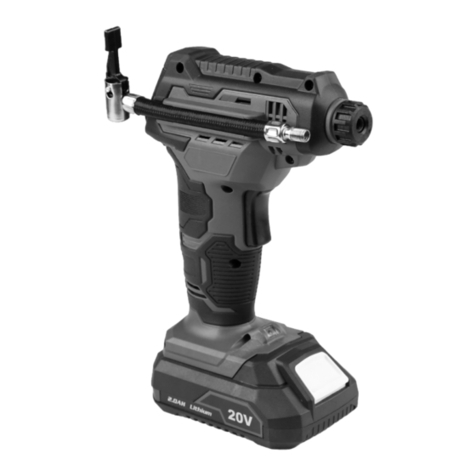
alzaTools
alzaTools AT-CAP20V user manual
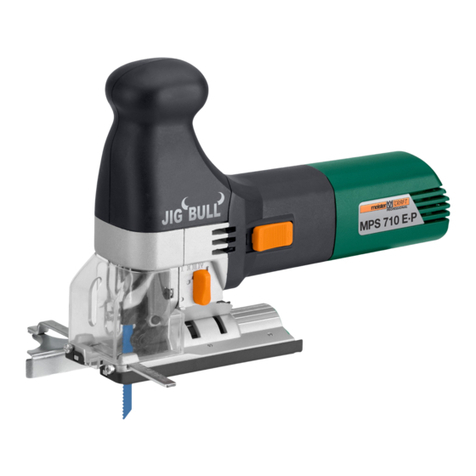
MEISTER CRAFT
MEISTER CRAFT MPS 710 E-P manual
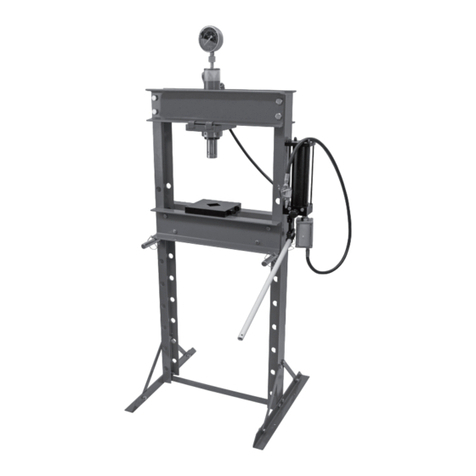
OEM Tools
OEM Tools 24812 Operating instructions and parts manual
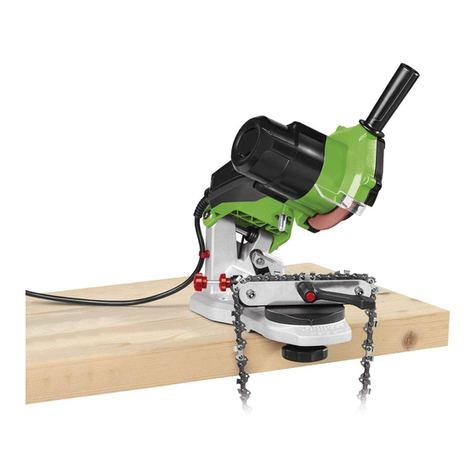
FLORABEST
FLORABEST FSG 85 C2 Translation of the original instructions
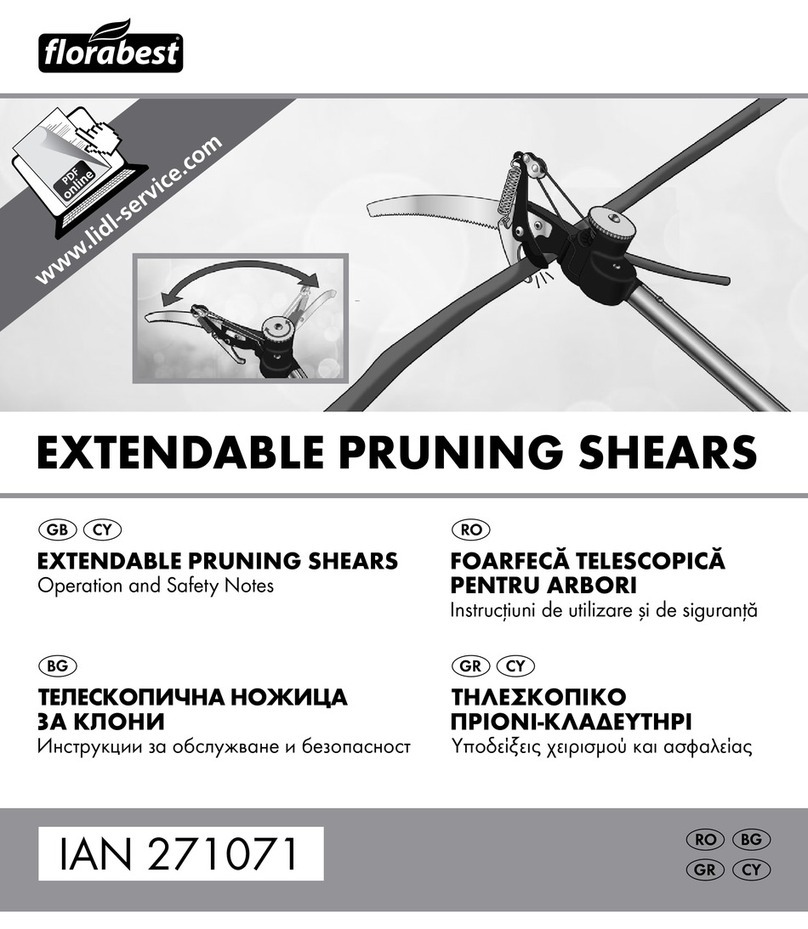
FLORABEST
FLORABEST ian 271071 Operation and safety notes
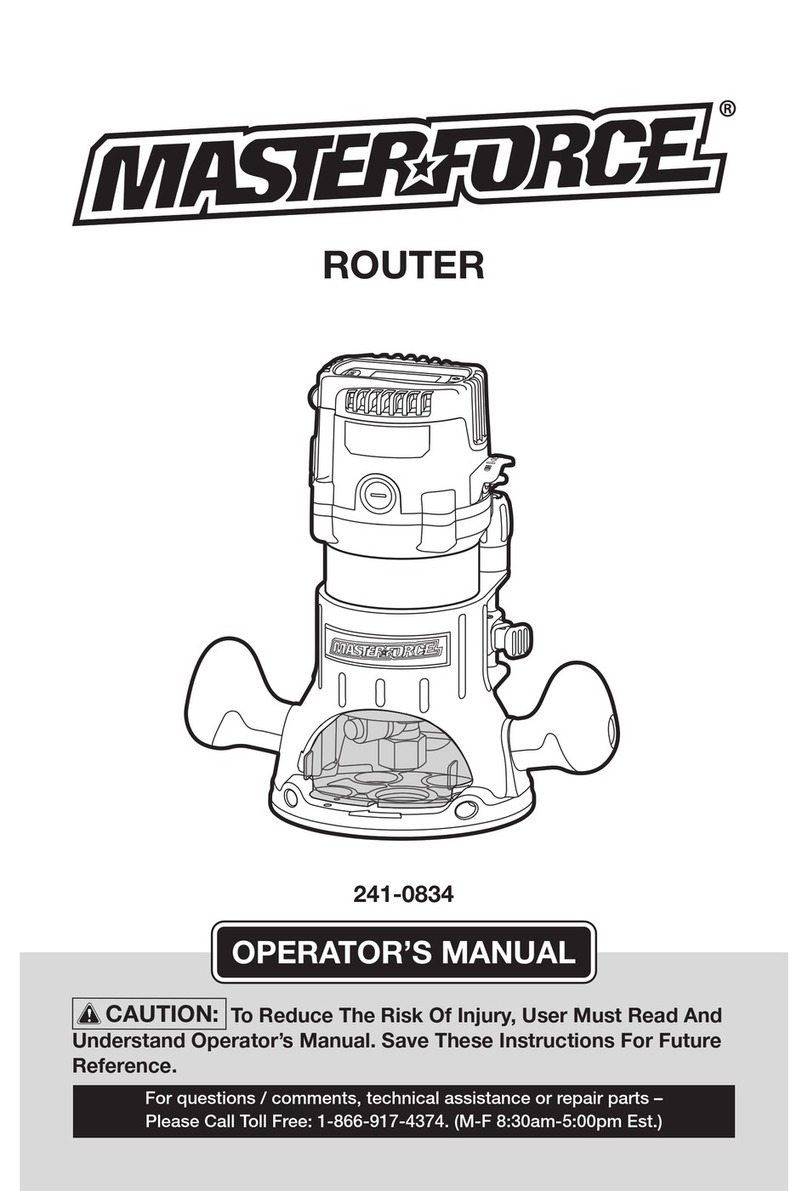
MasterForce
MasterForce 241-0834 Operator's manual
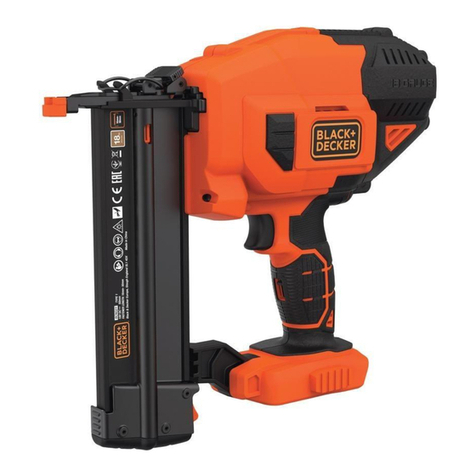
BLACK DECKER
BLACK DECKER BCNG01N Original instructions

FLORABEST
FLORABEST FAA 79 A1 Blade changing guide

BLACK DECKER
BLACK DECKER BL188 manual
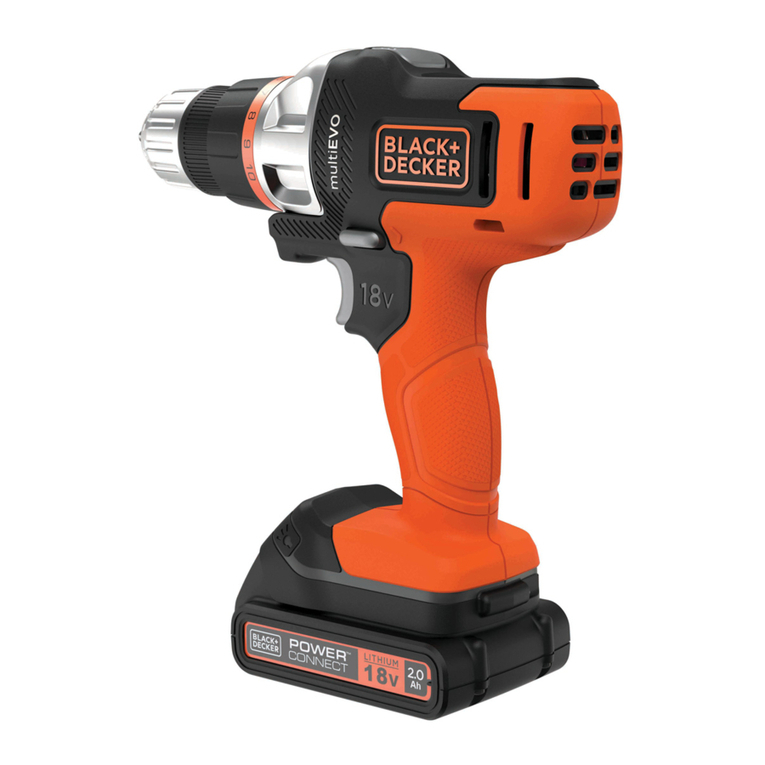
BLACK DECKER
BLACK DECKER EVO185 Original instructions
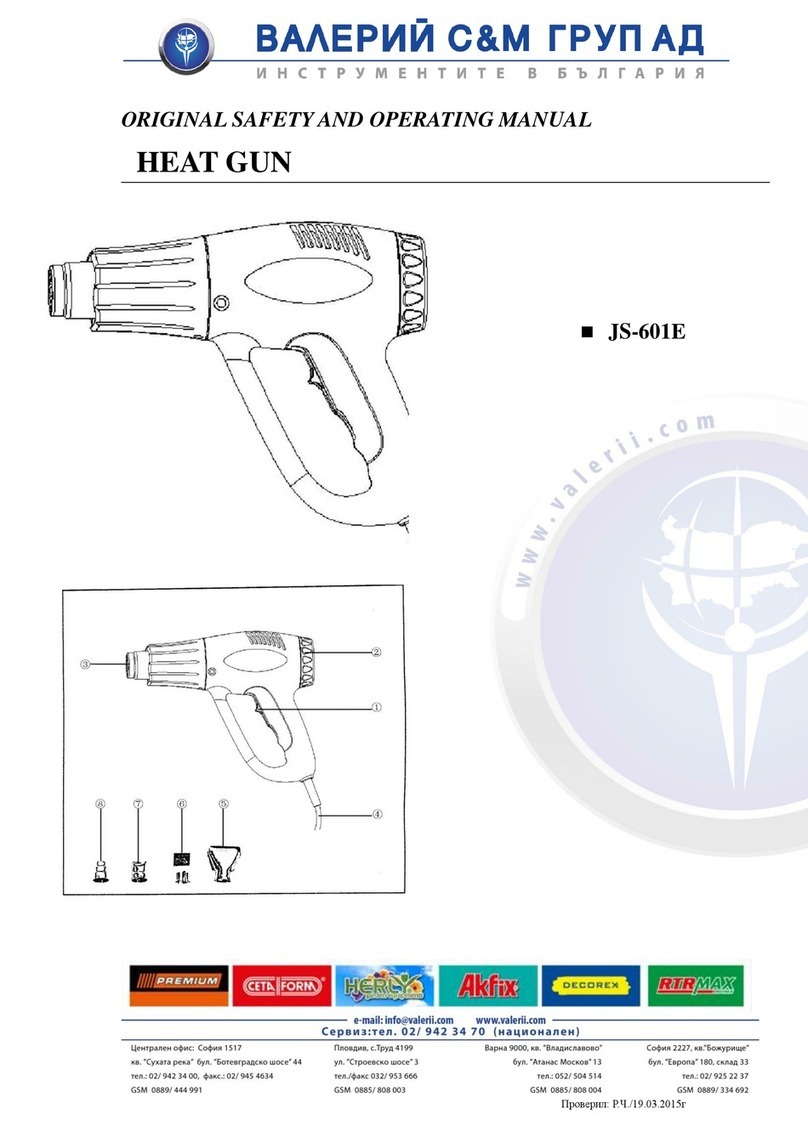
VALERII S & M GROUP
VALERII S & M GROUP JS-601D Safety and operating manual

parktool
parktool DT-5.2 instructions


